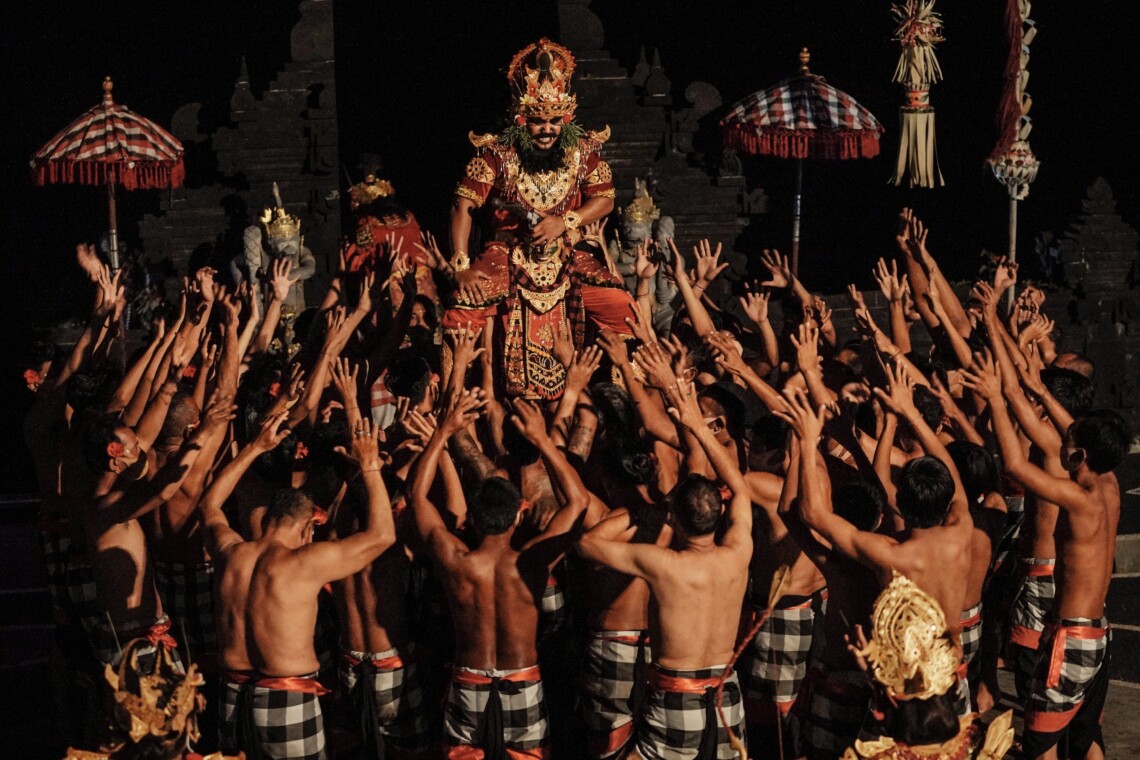Best Art Market in Bali That’s Worth a Visit!
- 17/01/2024
- Articles
Illustration of Best Art Market in Bali, photo by Charlie Pauly The Island of Gods is home to a truly fascinating culture... Read More

Illustration of Kecak Dance, photo by el jusuf on Pexels
Step into the vibrant world of Balinese culture with “Balinese Culture 101 – Unveiling the History of Kecak Dance.” This exploration unravels the fascinating story behind the renowned Kecak Dance, uncovering the rhythmic beats and cultural significance that define this iconic tradition. Join us on a journey into Bali’s artistic heritage, where each movement and chant in the Kecak Dance carries the weight of centuries-old traditions.

Illustration of History of Kecak Dance, photo by Jeffry Surianto on Pexels
Afternoons are ideal for visiting Uluwatu, the island’s southernmost point. Not only to enjoy the beautiful sunset from the cliff’s edge but also to witness the famous Kecak Dance Performance, also known as the Bali Fire Dance, which overlooks Uluwatu Temple. But what exactly is the Kecak, and what is the significance of this unique dance performance?
The Kecak dance is a traditional Balinese dance that dates back to the 1930s. Wayan Limbak, a Balinese dancer and German painter Walter Spies are said to have created it. The dance is based on the Sanghyang tradition of spirits-possessing dancers.
The Sanghyang dance is a dramatic performance version that incorporates the Hindu epic Ramayana saga. A circle of at least 150 performers chant “cak” and move their hands and arms in the air to dance. The story is told through the dance of Rama, a prince who saves his wife, Sita, from the evil giant King Rahwana.
Elements of Kecak Dance, photo by Den on Unsplash
The Kecak dance features more than a dozen dancers; it may have the most dancers on stage at any given time in any of Bali’s famous dances. The choir group comprises 50 or more male dancers who perform simple routines. The main dancers, who play the most important roles and perform numerous dance routines, usually consist of 10 to 15 dancers.
The dance depicts the Ramayana, Asia’s most famous epic. Although this story originated in India, it has since spread throughout Asia, particularly in Southeast Asia, through the same channels that Hindu and Buddhist teachings have. The Ramayana story has become a part of Bali’s cultural life and religious and moral teachings since Hindu teachings arrived on the island around 100 BC.
People Watching Kecak Dance, photo by Gede Yoga on Unsplash
Kecak dance performances are all over Bali, from the heart of the tourist district to the cliff’s edge. Here are some of the best places to see Bali’s Kecak dance.

Traditional Balinese Dance, photo by Bali Indonesia
In Bali, dancing is a popular form of storytelling. The most well-known is the Kecak dance, but a few others are worth learning!
Originally, the Janger Dance evolved from a form of singing among farmers. Today, this dance has transformed into a captivating performance featuring both female dancers, Jangger, and male dancers, Kecak, who incorporate elements of pencak silat, a traditional martial art, all performed seated.
The graceful dance movements seamlessly synchronize with the passionate tempo of the vocals, creating a harmonious and dynamic spectacle that showcases the evolution and fusion of cultural elements within the Janger Dance.
The Barong and Keris dance vividly portrays the age-old conflict between the forces of Good, embodied by the mythical Barong, and the omnipotent Evil personified by Rangda. This traditional performance unfolds a captivating narrative where the epic battle between these symbolic figures comes to life, offering a dynamic representation of the eternal struggle between positive and negative forces.
The dance not only serves as a cultural spectacle but also captivates audiences with its engaging storyline, sprinkled with elements of humor that add an entertaining dimension to the performance. The dynamic and intriguing narrative, combined with the skillful choreography, transforms the Barong and Keris dance into an immersive and enjoyable cultural experience for spectators.
The inception of the Legong dance finds its roots in a visionary dream experienced by a Sukawati King, where celestial beings adorned with golden headdresses were engaged in a heavenly dance. This ethereal vision inspired the creation of the Legong dance, symbolizing the Balinese people’s profound gratitude to their ancestors for the abundant blessings bestowed upon them.
Traditionally, the Legong dance was a sacred ritual performed exclusively by young, prepubescent female dancers. Once these dancers reached marriage age, their participation in the dance ceased. However, in contemporary times, the landscape has evolved, and you may witness the Legong dance performed by individuals outside the traditional demographic, including older dancers and even men. This adaptation reflects the dynamic nature of Balinese cultural expressions in the modern world.
If you’re eager to immerse yourself in the enchanting world of traditional Balinese dance, whether it’s the mesmerizing Kecak dance, the captivating Barong and Keris performance, or the graceful Legong dance, feel free to reach out to us. For inquiries and assistance in planning your cultural exploration, contact us at info@asiaholidayvilla.com or drop us a message at (+62) 816-342-767.
Join The Discussion